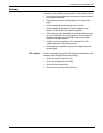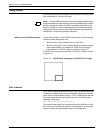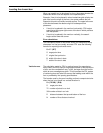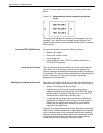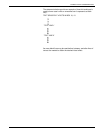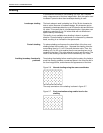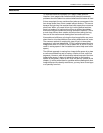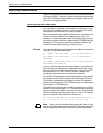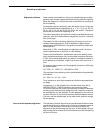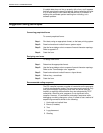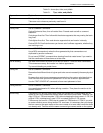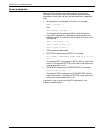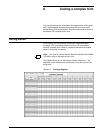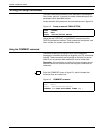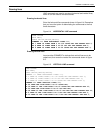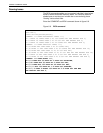
FORMS LAYOUT CONSIDERATIONS
XEROX DOCUPRINT 96/DOCUPRINT 96MX LPS FORMS CREATION GUIDE 5-15
Rounding variable data
Alignment problems Under certain circumstances, a form and variable data do not align
properly, even though it appears that both use the same line spacing.
When this happens, it may be the result of the effects of rounding on
the line spacing.
For example, you can construct a form with a grid unit of 13.6 cpi and
9 lpi. Horizontal lines are specified at 0, 4, 7, 10, 13, 16, 19, 22, 25,
28, 31, 34, 37, 40, 43, 46, 49, 52, 55, 58, 61, 64, and 67. The data is
printed with an override line spacing of “9.”
The natural assumption is that the form and the variable data line up.
However, when the variable data is merged with the form, it tends to
drift up the page.
The reason for this is rounding. Specifying 9 lines per inch for the
variable data means that the LPS is requested to place data at
approximately 33.333333 dots. The system rounds this number off to
33 dots per line.
Meanwhile, in FDL, rounding does not take place until it is time to
resolve specifications for the form to a dot address.
Please note the difference. Variable data has a line spacing value
that is computed as dots per line, and rounding is done on that value.
In FDL, the rounding takes place only when it is needed to resolve to
a dot address and, therefore, might involve more than one line at a
time.
For instance, the line drawn at 43 is assigned to scan line 1433 using
the formula below:
(43 * 300) / 9 = 12900 / 9 = 1433.3333 or 1433
The equivalent line positioning for the variable data is computed with
this method:
43 * (300 / 9) = 43 * 33 = 1419
Thus, we have an error that increases as calculation proceeds down
the page.
Furthermore, if, in the example form, we had drawn lines with a
REPEAT EVERY 3 LINES command, the uneven dot value
(33.333333 dots per line) would not have been rounded off because
rounding would not have been performed until it was time to resolve
the specification to a dot address. The dot address for three lines is
an even 100 dots. So, the lines for the form would be drawn at exactly
100 dots, and the variable data, on the other hand, would be using a
99-dot spacing.
How to avoid imperfect alignment The best way to ensure that a form and variable data share the same
coordinate system is to define both in terms of an integral number of
dots. It is also important to know when rounding will affect the
alignment of the variable data and the form. In the example, the only
way to make the form match the lines of data is to set the line spacing
for both at 33 dots.



